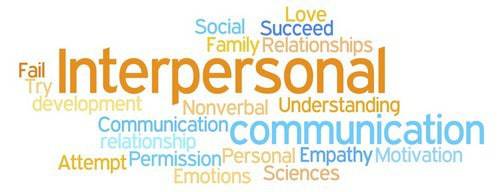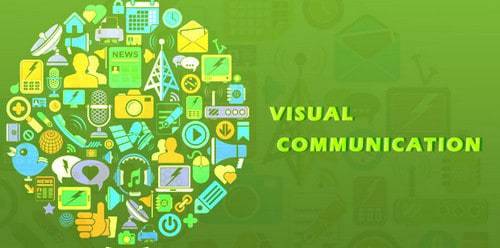
Mastering 5 Essential Communication Types & Tips

Discover the various types of communication that exist and learn how to improve your communication skills From verbal and non-verbal to written and visual, explore the different ways to effectively convey messages Gain valuable tips to enhance your communication abilities and connect with your audience on a deeper level
Communication is an essential aspect of human interaction. However, when it comes to brands communicating with their customers and teams communicating with each other, the nature of communication changes. Different forms of communication exist between individuals, including intercultural communication within teams.
What is Communication?
Communication is the process of transmitting information or ideas through various means such as speech, visuals, or writing. The communication model consists of a sender who sends the message and a receiver who receives it. The message needs to be presented in a simple and clear manner so that it can be easily understood by the receiver. If the message is not presented effectively, then the decoding process becomes difficult and the receiver may not understand the intended message.
There are five types of communication based on the types of senders and receivers involved. For instance, formal communication is more prevalent in team settings as compared to informal communication. However, personal and group communication among friends tends to be more informal in nature.
You can read more on What is Communication.
In essence, below we discuss the various types of communication used between people or between teams.
5 Types of Communication
Let us delve deep into the 5 types of communication observed between the group of people or a formal team.
1) Verbal Communication
Verbal communication, also referred to as oral communication, involves the exchange of information through spoken words between individuals. The main aim of such communication is to ensure that the message is understood clearly. Compared to email communication, verbal communication is faster and more precise, making it a preferred mode of communication despite the availability of messaging apps and email. People still opt for personal meetings, phone calls or face-to-face Skype calls because they are more effective and convenient in conveying messages.
Effective verbal communication is crucial for managers and executives alike. As leaders, they must be able to persuade and motivate their teams to achieve common goals. Additionally, executives must communicate with a diverse range of customers, each with their own unique communication style and level of comprehension. Therefore, possessing exceptional verbal communication skills is essential for success in these roles.
As you climb the ranks of an organization, it becomes increasingly important to have strong verbal skills. This is because effective communication at this level requires clarity and precision, leaving no room for misunderstanding.
For instance, a CEO or an MD might give a television interview that is watched by hundreds of stakeholders. In such a scenario, their verbal communication skills must be impeccable to avoid any confusion or misinterpretation. Furthermore, during difficult times, these leaders' ability to console and reassure their audience hinges on their verbal prowess.
Example of people who were great at the verbal type of communications.
Nelson Mandela
Martin Luther King
John F Kennedy
Mahatma Gandhi
2) Non-verbal / Interpersonal communication
The first impression you create upon entering a room can make or break a situation. It's essential to be mindful of your body language and posture. Standing tall and confident can exude a sense of strength and authority, while slouching can convey a lack of energy and enthusiasm. And don't forget about your appearance - taking the time to look polished and put together can show respect for yourself and those around you. When it comes to shaking hands, a firm grip can leave a lasting impression of confidence and professionalism.
Having strong interpersonal skills is a crucial requirement for new hires in organizations. This includes proficiency in non-verbal communication and effective communication techniques. In a sales meeting, for instance, how you react when you haven't met your target can be a telltale sign of your non-verbal skills. Being composed and level-headed versus panicking and faltering can make or break your professional growth.
A manager's ability to effectively use nonverbal and verbal communication is crucial in gaining respect and support from their team members. A manager who lacks confidence and exhibits negative nonverbal cues, such as stuttering, poor dress, or weak body language, will fail to inspire and lead their team effectively.
On the other hand, a manager with a positive personality and strong nonverbal communication skills can greatly motivate their employees. Simple gestures such as maintaining eye contact, placing a comforting hand on a shoulder, and offering encouraging words can make a significant impact on an employee's motivation. Conversely, negative nonverbal cues, such as taunting, ignoring, or mocking, will only serve to further demotivate an employee.
Therefore, nonverbal communication skills are an essential component of a positive office culture and effective leadership.
:
As individuals progress from employee to manager to leader, they develop a stronger ability to communicate nonverbally and through actions. They understand the significance of maintaining a calm demeanor during moments of crisis to maintain team composure. Additionally, they avoid letting their teams become complacent during periods of success.
Effective non-verbal and interpersonal skills are crucial in customer service. Consider a scenario where you are dissatisfied with a product and approach the customer service department, only to receive a rude response from the executive. Despite repeated visits, the problem remains unsolved and you are left feeling unsatisfied. Contrast this with a customer service department that greets you with a smile and reassures you that they are working on a solution. They keep you informed of progress and follow up to ensure your satisfaction.
3) Written Communications
Effective communication goes beyond spoken words. It includes non-verbal cues such as a warm smile, positive body language, and attentive listening skills. A skilled customer service representative recognizes the importance of these non-verbal signals and strives to make sure that every customer leaves with a sense of satisfaction. When a company hires customer service executives who possess excellent interpersonal skills, it shows a commitment to prioritizing customer happiness.
The landscape of written communication has been greatly transformed with the rise of digital age, smartphones and the internet. With the increasing popularity of messaging applications like Whatsapp, there has been a gradual shift towards a more informal style of writing. Despite this, email remains one of the most commonly used forms of written communication.
Written and oral communication can take on various levels of formality. Nowadays, even casual digital messages like those sent through WhatsApp can hold legal weight in a court of law, as evidenced by the numerous high-profile cases where celebrities have been scrutinized for inappropriate social media posts. This underscores the importance of utilizing written workplace communication in a secure and proficient manner. While informal communication may be appropriate for friends, it is crucial for working professionals to communicate formally to avoid any misunderstandings or potential misuse of quoted words.
Written communication has the benefit of being the ultimate authority once a decision has been made. Whether you're sharing pricing information with a customer, ranking a dealer, promoting an employee, or introducing a new product, written communication ensures that everyone is on the same page. However, it's important to be mindful of the potential downsides of formal written communication, as it can sometimes lead to ego and political issues. This is exemplified in instances such as controversial newspaper articles.
Written communication holds immense power, as exemplified by the popular saying "Words are mightier than swords." A single misdirected email has the potential to cause chaos and disruption. The release of sensitive emails and documents by Edward Snowden shed light on the importance of secure and private communication in organizations, as a breach in confidentiality can lead to serious consequences. Regardless of whether the actions were justified or not, these instances serve as a cautionary tale for the potential risks of written communication.
4) Formal & Informal
Formal and official written communication skills come in various forms such as emails, letterheads, memos, and reports. These types of written material are considered as documentary evidence and require a certain level of formality. It's important to note that once submitted, these formal documents cannot be denied later on.
:
- Provides clarity and structure to the communication process.
- Ensures that the message is conveyed accurately and consistently.
- Can be documented and used as evidence if needed.
- Allows for proper delegation of tasks and responsibilities.
- Helps to maintain hierarchy and order within an organization.
Using formal communication when finalizing policies and making decisions can be highly effective. This approach can aid in the establishment of clear procedures and ensure that the necessary steps are followed.
Any promises or any official plans need to be formally documented so that they can be referred to later.
Advantages of informal communication
Informal communication helps the “Open door policy” and makes people more confident and forthcoming with their ideas and creativity.
Informal communication does not incite fear into peoples mind
Casual conversations provide a platform for individuals to openly discuss their issues. However, formal communication can lack a personal touch and create a sense of detachment. Conversely, informal discussions have the potential to spiral out of control and result in harmful rumors.
5) Visual Communication
The medical industry is a prime example of an industry that heavily relies on visual communication. Whenever a new medication enters the market, medical representatives must showcase its benefits to doctors. Informative pamphlets are often used to provide doctors with all the necessary information about the medication, which enables them to confidently recommend it to their patients. Other industries are also adopting visual and communication methods to improve customer interaction and convey their ideas more effectively. Explainer videos, in particular, are gaining popularity and are now considered one of the most effective types of communication found on websites.
There are many elements in visual communication that can be used by marketers or companies.
Colors (such as brand colors)
Design (logo and brand design)
Advertising
Animations
Illustrations
Typography
Presentations
Visual communication has a significant impact in face-to-face interactions, including the use of diagrams on blackboards by teachers to explain concepts to students or graphs in PowerPoint presentations by managers to present information to executives or seniors. Another example of this is the rise in popularity of video resumes.
Here is a video by Marketing91 on Five Types of Communication.
Tips to Improve your Communication Skills
Effective communication with your boss can be challenging, especially when introducing a new project. However, there are strategies you can implement to make communication smoother for both parties involved. Here are some tips to enhance workplace communication:
When facing difficulties in understanding something or needing clarification, don't hesitate to ask questions. Your boss will appreciate your honesty and open communication. Furthermore, by asking for clarification, you can help your boss explain things better and improve your understanding. Make sure to clearly explain your problem or question before requesting help.
Instead, schedule a private meeting with the person to discuss the issue in a calm and professional manner. This allows for a more focused and productive conversation, where both parties can express their concerns and work towards finding a solution. Remember to approach the situation with an open mind and avoid becoming defensive or confrontational. Effective communication is key in resolving conflicts and maintaining positive working relationships.
To summarize, the type of communication most common are…
In teams
Formal Communication
Verbal Communication and Non-verbal communication
Written communication
Visual communication
In group of people
Informal Communication
Verbal and Non-verbal communication
Informal written communications
Above were all the different types of communications used by a group of people or between the team.












